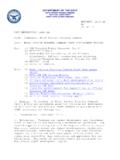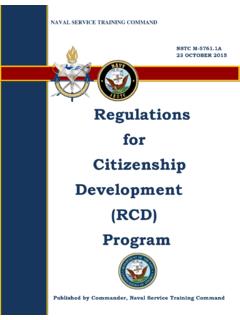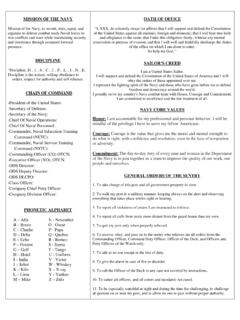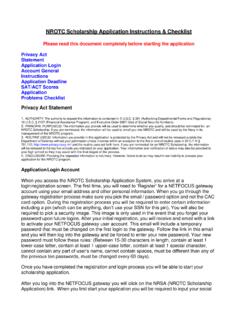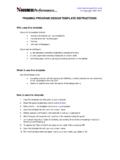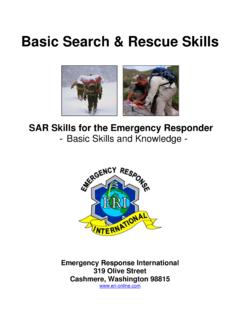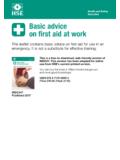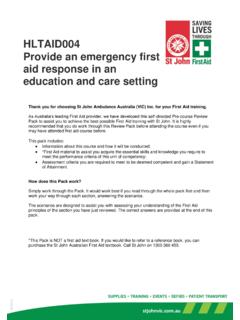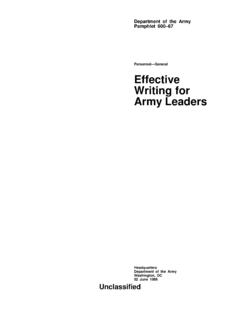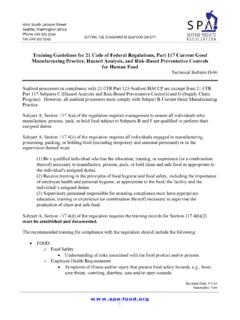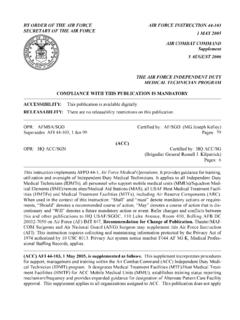Transcription of NAVAL SERVICE TRAINING COMMAND 2601A GREAT
1 DEPARTMENT OF THE NAVY NAVAL SERVICE TRAINING COMMAND 2601A PAUL JONES STREET GREAT LAKES, ILLINOIS 60088-2845 NSTCINST N00X 20 Feb 18 NSTC INSTRUCTION From: Commander, NAVAL SERVICE TRAINING COMMAND Subj: NAVAL SERVICE TRAINING COMMAND TRAINING SAFETY P ROGRAM Ref: (a) OPNAVINST (b) OPNAVINST (c) NETCINST (d) OPNAVINST (e) NETCINST (f) OPNAVINST (g) OPNAVINST 1. Purpose. Establish instruction and policy for implementing and administering the NavalService TRAINING COMMAND (NSTC) High Risk TRAINING (HRT) Safety Program in accordance with references (a) through (g). Additional guidance is provided for TRAINING that is physical in nature but does not meet the high risk TRAINING definition per reference (b) once a risk assessment is completed.
2 NSTCINST Background. Aggressive TRAINING programs designed to prepare military personnel to performprofessionally in normal, as well as potentially hazardous, evolutions entail elements of risk. A fatal or serious mishap can occur in any environment; however, some evolutions are more likely to result in serious mishaps than others and require procedures designed to reduce risk. NSTC must ensure TRAINING is conducted as safely as possible while meeting required course objectives. Safety initiatives shall be maintained at levels to facilitate safe but realistic TRAINING that fulfills Fleet operational requirements within practical limits. These initiatives are not intended to eliminate risk where it is necessary to meet valid TRAINING objectives but rather to promote the safest TRAINING that produces confident, capable Fleet Officers and Sailors.
3 4. Scope and Applicability. This instruction applies to all NSTC activities, NSTC civilianemployees, and military personnel involved in providing TRAINING that is physical in nature. However, only Officer TRAINING COMMAND Newport (OTCN) and Recruit TRAINING COMMAND (RTC) have formal high risk courses, which are defined as high risk courses having a Course Identification Number (CIN). All formal HRT shall be conducted in accordance with references (a) through (g). Formal HRT courses in the NSTC domain include: NSTCINST 20 Feb 18 2 (1) PT b. Direct Commission Officer Indoctrination; c. Officer Candidate School; d. Officer Development School (1) Small Arms TRAINING ; (2) General Shipboard Firefighting TRAINING ; (3) Advanced Shipboard Firefighting Lab; (4) Senior Shipboard Firefighting Refresher Course; (5) Basic Shipboard Damage Control Wet Trainer; (6) Swim Skills Maintenance and Improvement Course; and (7) Capstone Event (a) RTC 1.
4 Recruit PT in Freedom Hall; 2. Live Fire TRAINING ; 3. Dive Motivator TRAINING ; 4. Swim Skills Maintenance and Improvement Course; and 5. Confidence Trainer (Gas Mask). 5. NSTC Domain HR Trainers a. OTCN and RTC Commanding Officers shall approve the use of their respective commands HR trainers by D epartment of Defense (Military or Civilian), Coast Guard, National Oceanographic and Atmospheric Administration (NOAA), and International Military Students. All others shall require written approval from Commander, NAVAL SERVICE TRAINING COMMAND (CNSTC). b. Use of NSTC domain HR trainers for any other use than conducting approved formal TRAINING shall require written approval from CNSTC, example requiring CNSTC approval: Use of a fire trainer by Special Operations personnel to conduct search and seizure TRAINING while exposed to an atmosphere with fire hazards.
5 NSTCINST 20 Feb 18 3 6. NAVAL Reserve Officers TRAINING Corps (NROTC) units a. NROTC units do not conduct formal high risk TRAINING , but NROTC Units do conduct TRAINING evolutions that are physical in nature and can be considered a High Risk (HR) evolution; this will be determined by completing the NAVAL Education and TRAINING COMMAND (NETC) Risk Assessment form located in Enterprise Safety Adaptation Management System (ESAMS) under the resource option. An initial RAC of 1, 2, or 3 in the severity level of I or II in any step is considered high risk. The only exception to using the NETC Risk Assessment form will be when a unit is conducting TRAINING on a military base and that base requires the unit complete a risk assessment using the base form.
6 The Commanding Officer (CO) is still required to sign the form to ensure controls are in place to mitigate risk and he/she accepts the risk. (1) HR evolutions for NROTC Units must at a minimum include a thorough risk assessment per references (a) through (c) to identify hazards and put in place controls that eliminate or minimize those hazards to an acceptable level determined by the CO, an Emergency Action Plan (EAP) that complies with reference (c), i nstructor TRAINING requirements, Personal Protective Equipment (PPE) requirements and fall protection ( Crash Matts, Rubber/Mulch attenuation, etc.). Units that use local military facilities and trainers need to ensure they are safe for use and apply safety controls to mitigate injury.
7 The unit s responsibility for the safety of staff and students does not change when the TRAINING is conducted by individuals other than the NROTC staff, the unit CO has the responsibility to ensure the TRAINING is safe for the staff and students before allowing them to participate. Examples of NROTC HR evolutions include but are not limited to: (a) Physical Fitness (b) S wim Testing (c) S mall Arms live fire TRAINING by NROTC Staff. Note: Units using NROTC staff to conduct live fire TRAINING must notify the NSTC Safety Manager N00X to ensure compliance with OPNAVINST prior to conducting the TRAINING . Additional oversight may be required depending on how the unit is conducting the TRAINING .
8 (d) Physical Readiness Testing (PRT) and Combat Fitness T esting (CFT) for midshipmen (e) Field exercises (f) Confidence Courses (g) Rope Climb b. NROTC Collateral Duty Safety Liaison (CDSL) (1) The CDSL shall develop a Safety binder that will provide one location for safety NSTCINST 20 Feb 18 4 documents and ease the turnover process if not able to conduct face to face. The binder shall include at a minimum: (a) s afety letters of designation (b) Commanding Officer s Safety Policy (c) Official Mail Messages (OMM) pertaining to safety (d) Applicable OPNAV, NETC, AND NSTC instructions or a page listing applicable instructions and where to find them.
9 (e) Current copies of all COMMAND risk assessments signed by the Commanding Officer. (f) Copy of the Safety Officer TRAINING Compliance Checklist (g) Copy of virtual ESAMS reviews (1-2 per year) (h) Copy of past Safety Occupational Health Management Evaluations (SOHME s) including deficiencies. 7. Additional Requirements. Regardless of whether a course or evolution has been determined high risk, the following additional guidelines will be implemented and adhered to for all TRAINING conducted throughout the NSTC domain that is physical in nature: a. All units will conduct a comprehensive review of all TRAINING that is physical in nature and implement risk mitigation, TRAINING Time Out (TTO) procedures, Emergency Action Plan (EAP) development/drills, and staff oversight.
10 At a minimum, EAPs will be walked through on a quarterly basis at RTC and OTCN, and each semester at NROTC units, and exercised fully on an annual basis at all commands. The purpose of the EAP drill/walk through requirement in this instruction is to ensure the information and staff actions in the EAP are accurate, staff can administer first aid for a life threatening and non-life threatening injury while waiting for emergency services and to ensure staff is thinking about the various areas they operate in and how they will get emergency services to the victim. When feasible, local NAVAL Station or University Emergency Response Personnel should be involved this allows the emergency personnel to understand how and where the COMMAND operates to reduce response time to the victim.


